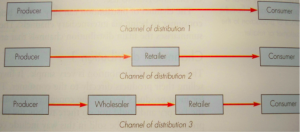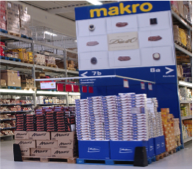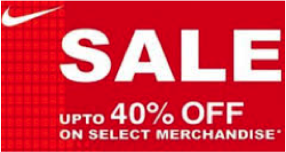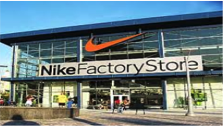Types of Non-Price Competition
Types of Non-Price Competition
Marketing involves a range of approaches (based round the 4Ps), including product differentiation, advertising, promotion and distribution. Which ones are used/take precedence depends on the nature of the product/service, the potential consumer and the market the firm operates in. What is the most important element? The pricing strategy? The product itself thus its differentiation/USP? Its promotion/advertising? The distribution channel?
Students need to be able to understand why a particular approach or mix of approaches maybe the most appropriate for a particular good/service – this is what 2.2.3 is all about!
Non-price competition – product differentiation
Firms can compete by making a product/service different from its rivals in ways that attract customers (e.g. Kia Rio vs Toyota Prius!). The difference might be real or just creative marketing, but the main thing is that the customer perceives a difference (e.g. Petrol brands and other commodity products). Branding and promotion enhances product differentiation, a source of competitive advantage which can allow the business to charge a higher price. A good example is t-shirts – there is little difference between them in reality but a little bit of print/the right name/logo can significantly increase the asking price. E.g., a Fred Perry t-shirt vs a Primark t-shirt!
Market positioning is important here. The business may find a niche/unsatisfied need. This type of differentiation is based on clear gaps in the market. A distinctive and attractive differentiating feature can become a USP, marketing can stress the value of the feature to reinforce a superior image to consumers. E.g. Sky Sports Premiership package vs BT Sports package and their USP of punditry teams.
Through product differentiation, firms aim to create brand loyalty (Tebay Motorway Services attained this) which will increase repeat purchases and future sales. Becoming more distinctive will effectively make you stand out from competitors in the consumers eyes – they are therefore more likely to buy the product even if its price is effectively high. Successful differentiation can both increase demand and reduce PED (copy the diagram) – this can increase revenue and make it harder for rivals to compete.
Non-price competition – advertising and promotion
Promotion is an umbrella term for advertising, branding, PR and packaging with a whole range of strategies for keeping the product in the public eye. Firms can advertise their products in many ways, ranging from the small and local to the huge and nationwide.
The two categories of advertising are:
-
Informative – designed to alert potential customers to product features, very important when there are specific technical qualities that may be attractive.
-
Persuasive – Engaging the customer on an emotional level – e.g. the (fake) Andrex puppy.
The advertising medium can be tailored to suit the needs and size of the market being tailored. Advertisers aim to reach as many of their target market as possible, influencing tastes and fashions and thus shifting demand curves to the right. It can, however, be difficult to assess the effectiveness of an advertising strategy. As it is no longer necessary to watch TV live, many people fast-forward through the adverts. Newsagents/supermarkets often provide bins for unread advertising leaflets. Despite this, firms still advertise due to the famous saying ‘it pays to advertise’.
Digital technology as well as conventional MR provide businesses with detailed data, allowing them to make sophisticated use of available marketing and promotion strategies. Some options are very expensive, so the most effective method of advertising/promotion must be chosen.
There are many different ways of promoting a product, the method chosen will depend on a number of factors. Is the product aimed at the mass market or a niche market? What size is the business? What’s the promotion budget? It will also depend on the target market and the best way of reaching it.
Non-price competition – distribution methods
After deciding on the right product, correct pricing strategy and the best promotion techniques for your target market, the product has to be available where and when customers want to buy it. Where customers buy the product will affect sales. It’s easy for a product to be in the wrong place and lose sales, or maybe even fail altogether.
E.g. Harrods is not on the Isle of Man! Place might seem a bit more mundane than product, promotion and price – but it is equally as important. If customers can’t access your product to buy it or if stocks run out, it doesn’t matter how good your product is, how keenly priced or how well promoted. Especially in the modern day when today’s consumers are used to having things on demand. Distribution is crucial.
Channels of Distribution
Business not only have to decide where to sell their products, but also _how _they will get their product to the consumer - the channel of distribution (route taken by the product from producer to customer). The traditional distribution channel for physical products is a four stage process (see below), though vertically integrated producers with their own retail arms shorten the process.
Three stage (no wholesaler) and two stage (producer to consumer) are now common as firms seek to reach consumers faster and to cut costs (non-price competition). Online sales, for example, can either be two stage (direct to the customer from the firms website) or three stage using an intermediary such as eBay or Amazon. Distribution strategies that cut costs or help customers can provide a competitive advantage.



 CHANNEL 1 – Directly to the consumer
CHANNEL 1 – Directly to the consumer
Very simple – manufacturers sell their product directly to the consumer. Usually impractical as their target market does not live near their factory. Examples include: A Kinder Bueno factory shop or a brewery’s shop.
A mail order catalogue or internet sales is another example of this channel of distribution (though some products are difficult and expensive to send via the post – e.g. eggs or a new car). This channel has gained in popularity with the growth of the internet (we will discuss changes in distribution to reflect social trends in due course).
__CHANNEL 2 – Producer to retailer to consumer __
Most common when the retailer is large, such as a large supermarket or department store. Also common where the product is expensive, such as furniture and jewellery. Example: Tesco or your local car dealership.
__CHANNEL 3 – Producer to wholesaler to retailer to consumer __
A wholesaler has a function of breaking the bulk. Wholesalers buy products from manufacturers in large quantities (economies of scale – purchasing), thus they negotiate a lower price. They then sell the products on in smaller quantities (i.e. breaking the bulk) to retailers. The retailer benefits because he gets a better price for the product (as well as smaller quantities) than purchasing it from the producer directly. Many food retailers stock their shelves from wholesalers, they do not want to buy large quantities because they cannot sell them quickly and might be worried about things going past their sell-by date. They also do not have enough space for storage!
Firms increasingly use more than one distribution channel. Some supermarkets and department stores have physical shops, offer ‘click and collect’ and also deliver online orders from their shops/warehouse (e.g. Argos). Chains increasingly rent areas in other stores as well – as with coffee shops inside bookshops or supermarkets (e.g. Costa and Waterstones/Tesco). As technology and habits change there will be more changes in distribution – we might be some way away from ‘drone distribution’, but distribution systems will continue to evolve.
Choosing marketing approaches
With so many marketing strategies available, firms face choices! Smaller firms are moreso limited by their marketing budget and cannot access marketing economies of scale. Large firms on the other hand spend heavily on marketing in order to build brands, market share and then on consolidating their position if they succeed.
Tip: __The advice you give in the exam must fit the context / scenario of the business in question. It must suit the sixe of the business, the nature of the product, the market involved and the efforts of the competitors. As always in this subject, providing a ____contextually valid_ point is essential._
Increasing marketing decisions are guided by ‘big data’. For example there are programs, such as ‘Mixpanel’, which can be used to track consumer behaviour. This gives details on what users are doing on the web/mobile devices. Thus we could tell how effective a single tweet was and how much it added to revenue. Thus firms have the ability to discover which messages are working best with which people/media – so marketing plans can be optimised.
All of this will help marketers more effective at their job and thus in theory increase sales. On one level, this works in the interest of consumers, helping them to get what they want and when they want it. On the other hand, those concerned with privacy or the risk of manipulation by firms should probably not have any social media accounts, or loyalty cards or access the web!







